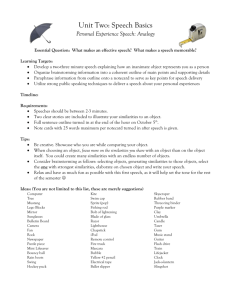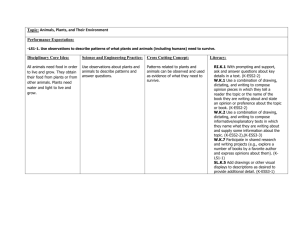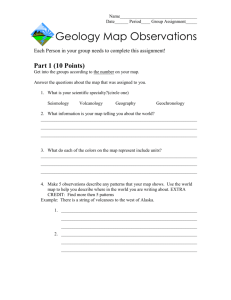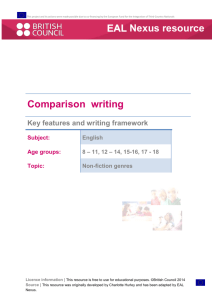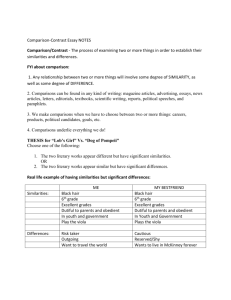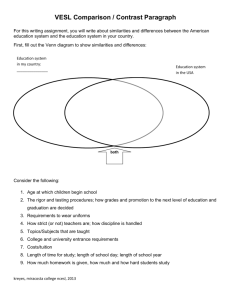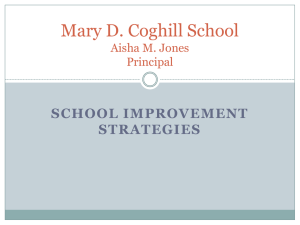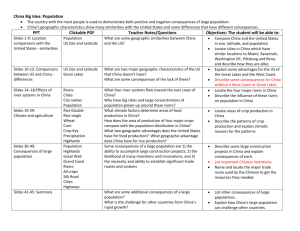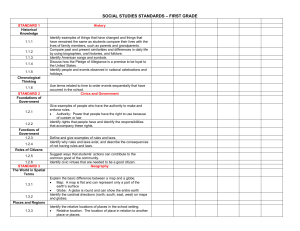Social Studies Curriculum Map
advertisement
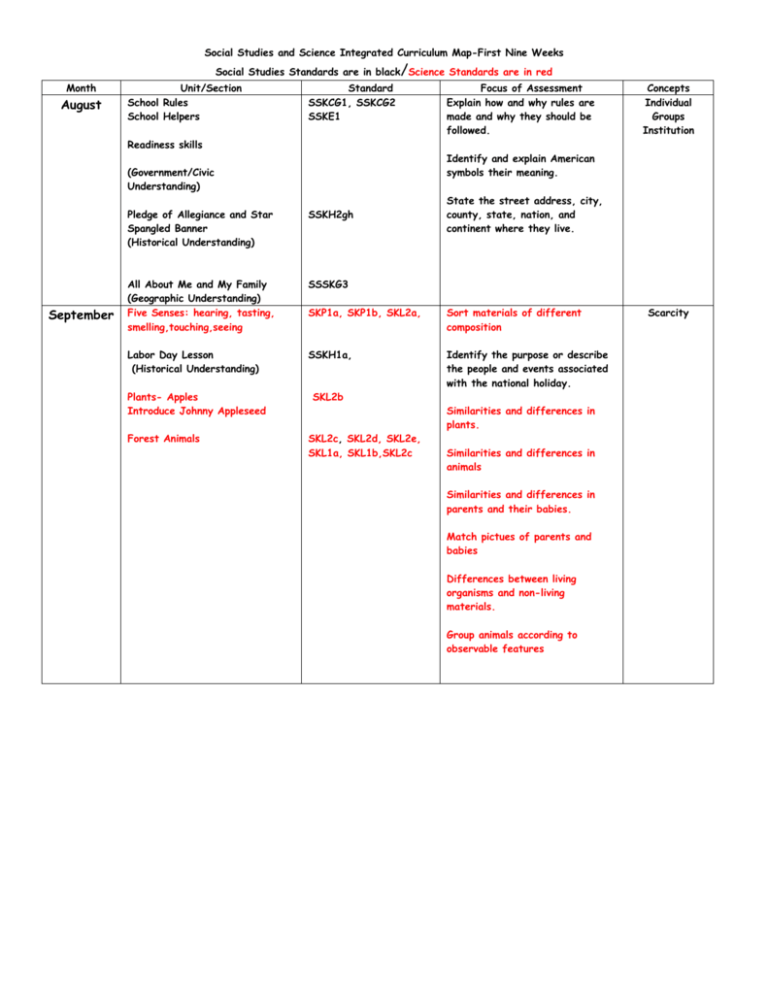
Social Studies and Science Integrated Curriculum Map-First Nine Weeks Social Studies Standards are in black/Science Standards are in red Month August Unit/Section School Rules School Helpers Standard SSKCG1, SSKCG2 SSKE1 Focus of Assessment Explain how and why rules are made and why they should be followed. Concepts Individual Groups Institution Readiness skills Identify and explain American symbols their meaning. (Government/Civic Understanding) September State the street address, city, county, state, nation, and continent where they live. Pledge of Allegiance and Star Spangled Banner (Historical Understanding) SSKH2gh All About Me and My Family (Geographic Understanding) Five Senses: hearing, tasting, smelling,touching,seeing SSSKG3 SKP1a, SKP1b, SKL2a, Sort materials of different composition Labor Day Lesson (Historical Understanding) SSKH1a, Identify the purpose or describe the people and events associated with the national holiday. Plants- Apples Introduce Johnny Appleseed Forest Animals SKL2b Similarities and differences in plants. SKL2c, SKL2d, SKL2e, SKL1a, SKL1b,SKL2c Similarities and differences in animals Similarities and differences in parents and their babies. Match pictues of parents and babies Differences between living organisms and non-living materials. Group animals according to observable features Scarcity Social Studies and Science Integrated Curriculum Map-Second Nine Weeks Social Studies standards in black /Science Standards in red Month October Unit/ Section Columbus Day (Historical Understanding) Standard SSKH1b, SSKE1 Focus Identify the purpose or describe the people and events associated with the national holiday. Describe the work of a community helper. Fall: Living and Non- living plants and animals SKL1a, Differences between living and nonliving materials Plants Pumpkins SKL1c,SKL2b Sorting plants Fall/Halloween (Geographic Understanding) SSKG1 Similarities and differences in plants American Symbols (Historical Understanding) SSKH2 Share details about family and community custom, or celebration Fire safety/fire fighters (Economic Understanding) November Fall/Thanksgiving Veteran’s Day SSKH1c, SSKH1d, SSKH3a Thanksgiving- Pilgrim & Indians (Historical Understanding) SSKH1d,SSKH3g Hanukkah/ Kwanzaa (Geographic Understanding) Christmas (Geographic Understanding) Culture Identify the purpose or describe the people and events associated with the national holiday. Describe changes in the day and night skies Classify objects in the day and night skies Nutrition could be included around Thanksgiving if you want to teach a unit on this. December Scarcity Culture Identify American symbols and explain their meaning. Use words and phrases related to chronology and time. Thanksgiving: Long Ago & Now (Historical Understanding) Day and Night Sky Concepts Location Recognize that the sun, moon, and stars stay in the sky. SKE1a,SKE1b,SKE1c, SKP3b,SKP1b SSKG1 Classify objects according to attributes Recognize that the sun supplies heat and light to the earth Share details about family and community custom, or celebration. Culture Social Studies and Science Integrated Curriculum Map-Third Nine Weeks Social Studies standards in black/ Science Standards in red Month January Unit/ Section Standard Review School Rules Winter Weather SSKCG1ab SKE2c Animals/Hibernation SKL1b Plants: trees (Bare trees & Evergreens) SKL2b Focus Explain how and why rules are made and why they should be followed. Recognize earth materials (ice, snow, water) Sort animals according to observable features Concepts Individual Groups Institution Similarities and differences in plants MLK Jr. (Historical Understanding) SSKH1 Gravity and Motion SKP3a SKP3c Identify the purpose or describe the people and events associated with the national holiday. Classify objects according to attributes Explain effects of gravity on objects that are dropped. Maps/Globes & Land/Water Features February Earth Week (Geographic Understanding) President’s Day Lincoln, Washington, and the current President (Historical Understanding) SSKG2abc SSKH1f Valentine’s Day (Geographic Understanding) SSKG1 American Symbols (Historical Understanding) SSKH2a-h Location Explain that a map is a drawing of a place and a globe is a model of the Earth. Identify the purpose or describe the people and events associated with the national holiday. Share details about family and community, customs, or celebrations. Identify American symbols and explain their meaning. Individual Groups Institution Culture Social Studies and Science Integrated Curriculum Map-Fourth Nine Weeks Social Studies standards in black/Science Standards in red Month March Unit/ Section Tiny Town choices and wants/needs (Economic Understanding) GPS Standard SSKE3ab/SSKE4 Community Helpers (Economic Understanding) SSKE1,SSKE2 Transportation Long ago (Historical Understanding) SSKH3ab Focus Differences between goods and services with an explanation Describe the work of a community helper. Explain that people earn income by exchanging their human resources for wages or salaries Use words and phrases related to chronology and time. April Spring Life Cycles SKL1a Butterflies SKL2a SLK2c SKL2d Differences between organisms and non-living materials Explain the similarities and differences in animals Recognize the similarities between a parent and a baby SKE1c Plants SKL1c SKL2b SKE2b Rabbits, Chicks, Eggs, Frogs Match the pictures of babies and parents Recognize that the sun supplies heat and light to the earth SKL1b Group plants according to their observable features SKP1a Explain the similarities and differences in plants SSSKG1 SKE2c Group animals according to observable features Easter Earth Day (Geographic Understanding) May Bodies of water: Lakes, rivers, oceans, streams, ponds SKE2c Explain that a map is a drawing of a place and a globe is a model of the Earth. Physical attributes of earth’s materials SKL2a SKL2c SKL2d SKE1c SKL1c SKL2b Concepts Scarcity Differences between organisms and non-living materials Recognize the similarities between a parent and a baby Match the pictures of babies and parents Recognize that the sun supplies heat and light to the earth Group plants according to their observable features Time Change Continuity Flag Day Lesson and Independence day (Historical Understanding) Memorial Day Lesson (Historical Understanding SSKH1h SSSKH1i SSKH1g Rocks/Soils SKE2abc, SKP1ab Explain the similarities and differences in plants Identify the purpose or describe the people and events associated with the national holiday. Culture Observe physical attributes of soils Recognize earth’s materials Compare and sort materials of different composition Yearlong (ongoing) Standards covered during calendar-SSKH3,SSKG1, SSCG1,SSCG2,SSKE4 Students will correctly use words phrases related to chronology and time to explain how time changes The student will explain American Culture by explain diverse community and family celebrations and culture. Demonstrate good citizenship Retell stories and demonstrate positive and negative character traits and will explain how the people in the stories show the qualities of honesty, patriotism, loyalty, courtesy, respect, truth, pride, self-control, moderation, and accomplishment. Explain that people must make choices because they cannot have everything they want. Characteristics of Science Elements are covered in all subject areas throughout the school year. Habits of Mind-Students will: be aware of the importance of curiosity, honesty, openness and skepticism in science and will exhibit these traits in their own efforts to understand how the world works. have the computation and estimation skills necessary for analyzing data and following scientific explanations use tools and instruments for observing, measuring, and manipulating objects in scientific activities use the ideas of system, model, change, and scale in exploring scientific and technological matters communicate scientific ideas and activities clearly Nature of Science-Students will: understand the important features of the process of scientific inquiry Notes: Timing of Science and Social Studies Units is flexible for the purpose of alignment with CCGPS English/Language Arts/Reading Units. Morgan County Charter School System does not prescribe the specific time (weeks) a unit should take in the core subjects. That is flexible based on the student performance data, assessments, and instructional needs. K-12 grade-specific standards define end-of-year expectations and enable students to meet College & Career Readiness expectations no later than the end of high school. College & Career Readiness Expectations: Students demonstrate independence. Students build strong content knowledge. Students respond to the varying demands of audience, task, purpose, and discipline. Students comprehend as well as critique. Students value evidence. Students use technology and digital media strategically and capably. Students come to understand other perspectives and cultures.
